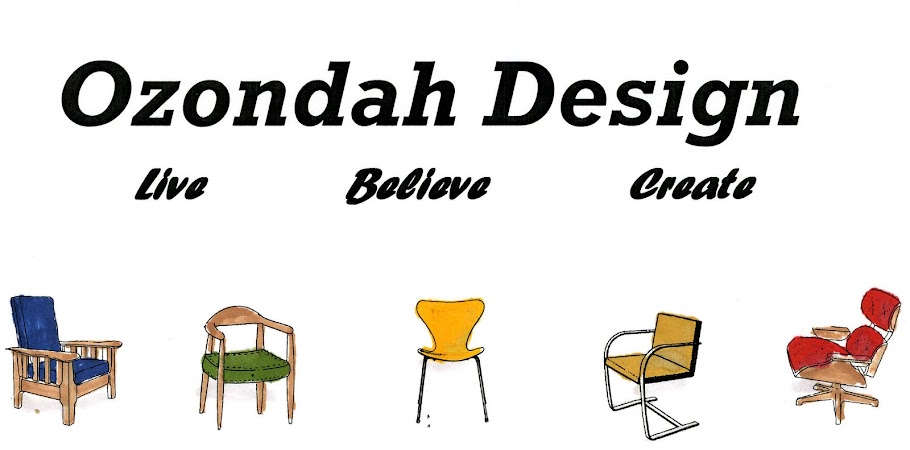The following are snippets of a research paper I wrote titled: Homes
of Modern America:
Eames,
Johnson, Eichler and
Wright
Beginning
in the early 1950’s the American dream of home ownership became a
reality for many, specifically in California where business men such
as Donald Drummond, Joseph Eichler and Earl “Flat-top” Smith
mass-produced simple homes with open floor plans, post-and-beam steel
structure, and expanses of glass. The homes of Joseph Eichler was, arguably, the most successful of
the three builders and even today the ownership of an Eichler home
has, in parts of California, nearly the same prestige of owning a
Wright home.
Wright's Falling Water
For
Wright Organic-Architecture was far more than an aesthetic style,
rather a new way to look at the structures in which society thrives.
Many of the principles of Wright's Organic-Architecture share common
characteristics with the mass-produced California Modern homes. In a
1908 article for Architectural Record Wright lays out the integral
parts of Organic-Architecture. Principles such as simplistic homes
which only contain the rooms necessary for the owner's lifestyle and
the integration of doors and windows designed not only as access
points but to replace unnecessary decoration were integrated into the
designs of many Eichler's homes. Wright further preached of built-in
furnishings, integrated after market appliances and fixtures, and the
necessity of art incorporated into, in some cases apart from, the
walls as opposed to gilded frames covering large expanses of wall.
The most important attributes of Wright's principles
of Organic-Architecture are the homes relationship to landscape, the
nature of its' materials, the use a natural spectrum of colors, and
the individual desires of the homeowner.
Photo from HERE
Through
their visual qualities, their construction of space and the way each
structure functions for the modern American family, Johnson's Glass
House and Eames Case Study #8 house adhere to the principles of
Organic-Architecture as outlined by Frank Lloyd Wright and acted as
prototypes for the modern American home despite their box forms.
Johnson's Glass House, Photo from HERE
The
Glass House contains no brick or wood-framed floor to ceiling
exterior walls. On all of the homes four façades lay horizontal
black steel beams that span the entire length of the building.
Similar steel beams stand vertically at each of four corners of the
home and function as columns. On the vertical plane between the
horizontal and vertical steel beams are clear glossy panels of glass.
These glass panels are separated by smaller steal mullions. The
horizontal mullions are set at the height of a traditional wainscot
trim, or one-third the height of the wall, and span the length of all
four sides with the exception of the four doorways which are centered
of all four of the clear façades. Vertical mullion are accompanied
by horizontal mullions dividing each section in half, two on the
shorter elevations and four on the longer.
Eames Case Study #8 house, Photo from HERE
In
the Eames House, entering the south side of the longer of the two
rectangular structures one finds an expansive double high living room
filled with multiple layers of rich textures and wide spectrum of
colors. Only four pieces of furniture are in this space yet it is far
from empty. Parallel to the shorter wall stands a stream-lined Eames
Sofa Compact draped in textiles, pillows and blankets, souvenirs from
the couple’s adventures around the world. Along each of the longer
walls are two chairs, on the glass wall is the iconic Eames Lounger
with tufted black leather upholstery and the rich grain of the molded
plywood frame. Plant life and vegetation accompany lounger on this
wall which echoes the structural wood on the opposite. The opposite
wall, which contains no windows due to the fact the it is nestled up
against the hillside, is paneled with planks of glossy golden wood
and is the back drop for a simple wooden framed bookcase that stands
the height of the first story. The bottom two and top three shelves
of the book case are dedicated to a hundred or so books in a variety
of sizes and colors. The floor of this wide open space is covered in
white square tiles, to one section a large rough brown rug and a
smaller plush blue rug categorize the sitting space and form an
implied pathway. Apart from the walls of glass which illuminate this
space by day three paper pendant lights, two rounds and one
cylindrical, add a warm glow to the large room. A tumble weed hangs
from the ceiling near two Hans Hoffman organic paintings which hang
parallel to the floor as though raining on the inhabitants, every
surface acts as a new canvas for a collage of objects. To one end of the room a deep alcove is formed from the paneled wall
and a wide wood-paneled partition wall. In this space an L-shaped
built-in sofa is again covered in a wide array of textiles
accompanied by shelves filled with souvenir objects large and small.


























